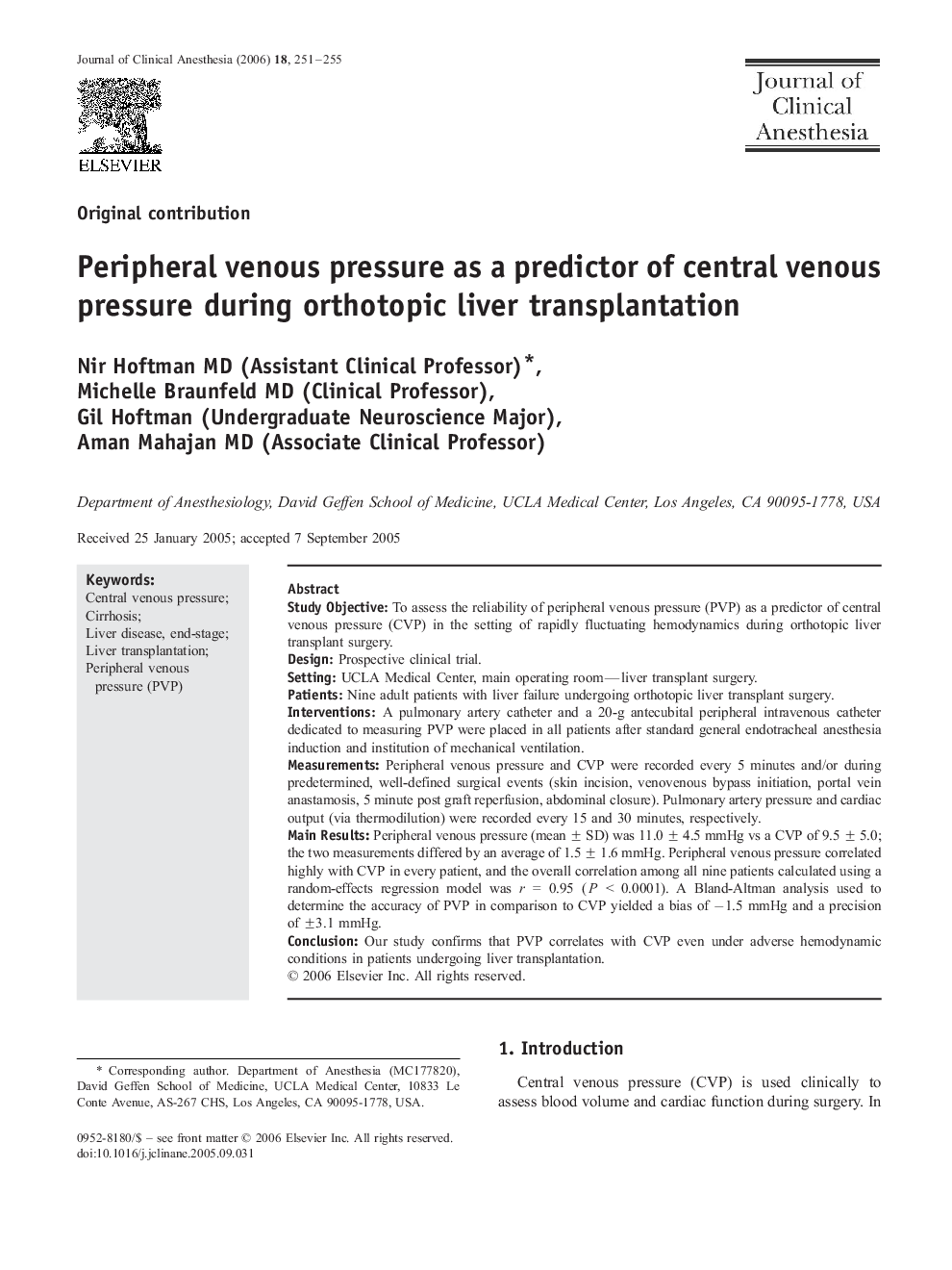| Article ID | Journal | Published Year | Pages | File Type |
|---|---|---|---|---|
| 2763867 | Journal of Clinical Anesthesia | 2006 | 5 Pages |
Study ObjectiveTo assess the reliability of peripheral venous pressure (PVP) as a predictor of central venous pressure (CVP) in the setting of rapidly fluctuating hemodynamics during orthotopic liver transplant surgery.DesignProspective clinical trial.SettingUCLA Medical Center, main operating room—liver transplant surgery.PatientsNine adult patients with liver failure undergoing orthotopic liver transplant surgery.InterventionsA pulmonary artery catheter and a 20-g antecubital peripheral intravenous catheter dedicated to measuring PVP were placed in all patients after standard general endotracheal anesthesia induction and institution of mechanical ventilation.MeasurementsPeripheral venous pressure and CVP were recorded every 5 minutes and/or during predetermined, well-defined surgical events (skin incision, venovenous bypass initiation, portal vein anastamosis, 5 minute post graft reperfusion, abdominal closure). Pulmonary artery pressure and cardiac output (via thermodilution) were recorded every 15 and 30 minutes, respectively.Main ResultsPeripheral venous pressure (mean ± SD) was 11.0 ± 4.5 mmHg vs a CVP of 9.5 ± 5.0; the two measurements differed by an average of 1.5 ± 1.6 mmHg. Peripheral venous pressure correlated highly with CVP in every patient, and the overall correlation among all nine patients calculated using a random-effects regression model was r = 0.95 (P < 0.0001). A Bland-Altman analysis used to determine the accuracy of PVP in comparison to CVP yielded a bias of −1.5 mmHg and a precision of ±3.1 mm Hg.ConclusionOur study confirms that PVP correlates with CVP even under adverse hemodynamic conditions in patients undergoing liver transplantation.
